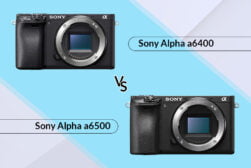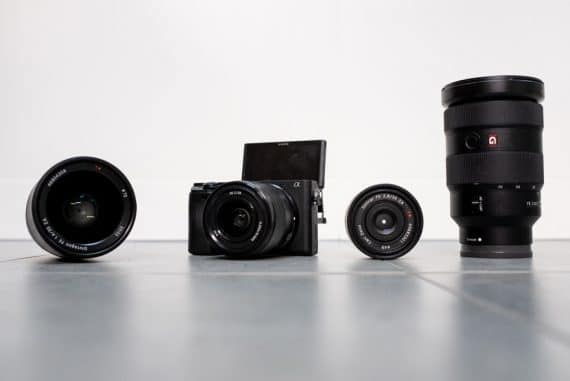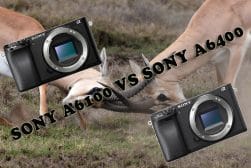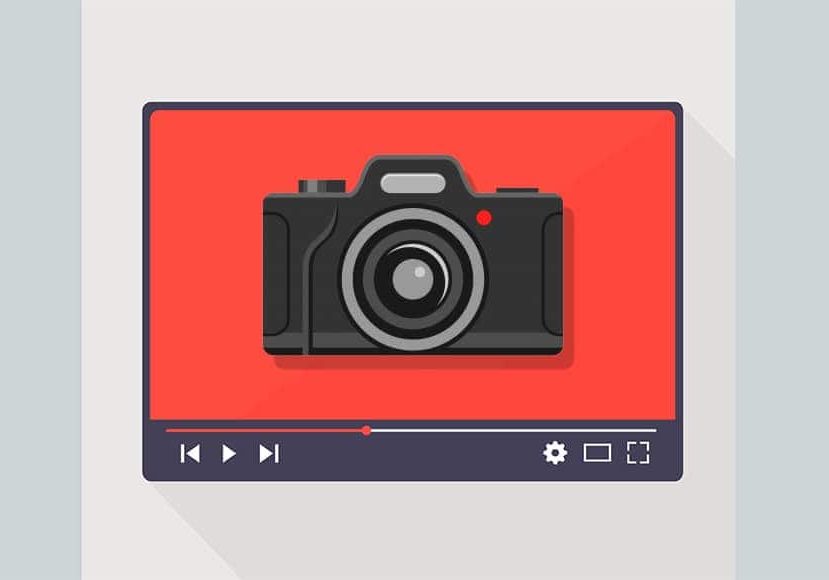
Best Camera for YouTube & Filming Yourself
Selecting the best camera for YouTube is tough. This expert article by an experienced photographer/videographer will make the process easy.
Camera Gear Guides | Camera Guides | By Don Machuca | Last Updated: February 13, 2024
Since its first video went live on April 23, 2005, YouTube has steadily become the go-to video platform for people who want to reach a large audience. After all, where else can you get such wide reach for next to nothing?
That said, it’s important to keep in mind that with the billions of people making use of the site, being found – much less getting exposure you want – isn’t something that’s guaranteed.
But hey, don’t take this the wrong way! This simply means that if you want a shot at being in the limelight, you’re going to have to work hard to get it.
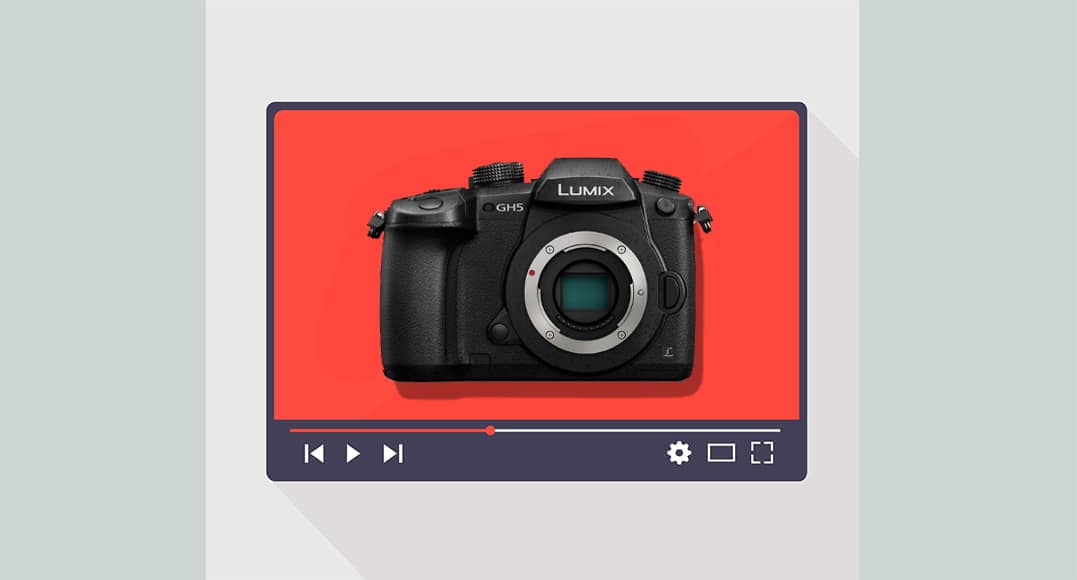
Incredible feature set in a robust, weatherproof body. Great image quality. Highly recommended.
If you’re wondering what makes people succeed on YouTube, the answer probably won’t surprise you. It’s the content they produce. In almost all cases, the material that successful YouTubers come up with is well researched, well written and well presented.
(Nailing the YouTube thumnbail size and banner size is also important!)
What’s more, successful YouTube videos are usually shot with decent cameras, lights and sound equipment so you can expect the technical quality of their content to be excellent.
On that note, this review will deal with cameras that can help you get your start on YouTube. The cameras featured, while not cheap, aren’t over the top and are actually very good value for money.
All the cameras in the review below are very capable tools for producing high-quality video.
Best YouTube Cameras in 2024
| Image | Product | Features | |
|---|---|---|---|
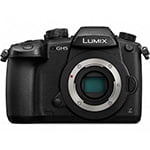 | Panasonic GH5OUR #1 CHOICE |
| View Price → |
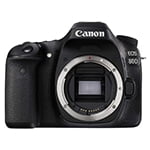 | Canon 80DHIGHLY RECOMMENDED |
| View Price → |
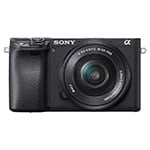 | Sony a6400BEST COMPACT |
| View Price → |
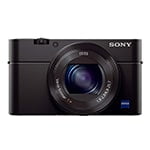 | Sony RX100 IVBEST BUDGET |
| View Price → |
1. Panasonic GH5 BEST ALL ROUND
- In-body stabilization (IBIS)
- Shoots 4K up to 60fps
- Video capture isn’t limited
- Flexible color profiles
- Anamorphic capture
- Has a flip screen
- Pricey
- AF can be unreliable in low light
- Short battery life
- No USB charging
Size: 5.47 x 3.86 x 3.43″ (139 x 98 x 87 mm)
Weight: 25.57 oz (725 g) with battery
Sensor: Four thirds CMOS
Who uses it? Casey Neistat, Nigahiga
If creating high quality content for your YouTube channel is something you value above all else, you’re going to need a great tool to record the stuff you come up with, and at this price point, it doesn’t get better than the Panasonic GH5.
This camera isn’t your run-of-the-mill recording device but is instead, a technological marvel that will keep up with you no matter what. If don’t mind stretching your budget for a camera, you may want to consider the Panasonic GH5.
As far as cameras go, the Panasonic GH5 is a real heavy hitter. In fact, its capabilities take it far beyond YouTubing, so much so that even indie filmmakers use it to get their work done.
As for stills quality, the Panasonic GH5 with its 20.3 megapixel, micro 4/3 sensor can keep up with cameras with sensors twice the size, although it will struggle at high ISOs.
So, how does the Panasonic GH5 help you produce better content for your photography YouTube channel? To begin with, it’s chock full of features that make it worth the relatively high initial cost of owning it.
The in-camera stabilization system for instance, does such a good job that you can take it for a walk (or a run) without a gimbal and expect to capture footage that won’t make your viewers reach for motion sickness pills. This feature is great to have especially if most of your content is shot while on location or while on the go.
The thing that would get any videographer most worked up about the GH5 is the video quality that it’s capable of producing. Like many other cameras, the Panasonic GH5 can shoot in ultra-high definition (4K), plus it lets you shoot in 4K at up to 60 frames per second.
This gives you a lot of leeway and definitely adds a lot of value to your content especially if you have a flair for the dramatic.
Then again, you may argue that 4K isn’t something you normally shoot your content in (YouTube doesn’t support it anyway). Well, the Panasonic GH5 would still be a good choice as it lets you shoot in full HD at up to 180 fps. This provides you with a lot of versatility that other platforms may not be able to give you.
The GH5 lets you choose the color profiles that best suit your shooting conditions. The Cine D profile for example, allows you to shoot videos with very nice looking contrast and saturation. If that isn’t enough for you, Panasonic also offers a V-Log shooting mode which allows more advanced users to extract the most out of a video’s dynamic range.
What this means is, the flat, unappealing output that the V-Log profile produces can be tweaked and color graded more effectively to conform to the user’s tastes. Take note though that the V-Log feature is a paid upgrade that will cost 99 bucks.
As far as sound recording goes, the Panasonic GH5 records in stereo and boasts improved audio capture. It would, however, still be advisable to make use of the built-in external microphone port to pick up even better audio.
Aside from that, the Panasonic GH5 comes with a full HDMI port, dual SD card slots and a headphone jack. You can even download the LUMIX webcam software for some live streaming action – see our article: what kind of camera do I need to live stream.
Also, if you happen to have a Panasonic GH3 and/or GH4 you’ll be happy to know that the Panasonic GH5 uses the same batteries so you should be able to save a bit or at least have no trouble finding extras.
No doubt, the Panasonic is an awesome camera but, like everything else, it does have an Achilles heel – auto focus. In fact, even Panasonic acknowledges this in their manual, stating: “Sometimes, it is difficult to focus in Auto Focus when recording 4K motion pictures.”
In plain-speak, the Panasonic GH5’s auto focus is prone to hunting which means that it may become confused and focus on the wrong thing.
Note, however, this becomes an issue if you’re shooting alone facing the camera. Otherwise, if you are behind the camera, you (or someone shooting for you) can compensate for this by manually focusing on the proper subjects.
Other things to note would be an odd side to side motion despite the in-camera stabilization, relatively short battery life and the fact that you cannot charge the battery via the camera’s USB port.
Let’s face it. There are cheaper alternatives to the Panasonic GH5 but, given the level of technology involved, you will certainly get your money’s worth.
Besides, presenting crisp and clear output to the folks who take the time to watch your work is a must and you owe them nothing less.
Here are some of the things you will need to get up and running. The Panasonic GH5 makes use of interchangeable lenses so, you’re going to need at least one to be able to use the camera.
Next, since the camera does tend to eat up battery power quite fast, you’re going to want a fully charged spare or spares with you whenever you are shooting.
Media is also something to consider as you’re going to need a few very fast, very high capacity UHS II SDXC cards if you want to shoot a lot of footage and maximize the camera’s potential.
All told, the Panasonic GH5 is more than a match for your YouTube aspirations and if you’re really serious about making a name for yourself, it may be a worthwhile purchase for as long as you understand that ultimately, the content in its entirety, will always be king.

2. Sony RX100 Mark IV BEST BUDGET COMPACT CAMERA FOR YOUTUBE
- Fast Exmor RS sensor
- Fast frame rate (up to 960 fps)
- Shoots 4K video
- Fast shutter speed (up to 1/32000)
- Sharp 24-70 equivalent lens
- Built-in ND filter
- Short battery life
- Specific SD card for full functionality
- Overwhelming interface
- No external microphone port
Size: 4.0 x 2.3 x 1.6 in (102x58x41mm)
Weight: 10.4oz (295 g) with batteries
Sensor: 20.1MP Exmor RS 1″ stacked CMOS
Who uses it? Roman Atwood, Bratayley, FunForLouis
Sometimes the best video camera comes in a small package.
If you’re in the market for a camera to shoot YouTube videos with, there’s definitely a lot out there to choose from. If you want something small, dependable and very capable that you can easily take with you anywhere, then the Sony RX100 IV is definitely something to consider.
Coming from a company that’s an old hand at making cameras, the Sony RX100 IV is an impressive compact that’s chock full of advanced, yet practical features like super slow motion recording, built-in ND filter and many others.
It’s not the latest in the RX100 lineup (see our Sony RX100 VI and RX100 VII reviews for that), but this gives it one big advantage – value for money. While the features of the camera are still more than adequate for 2024, the 2 newer models have led to a big drop in its price :-)
Despite the RX100 IV’s diminutive size, it’s a powerhouse in terms of what it can do. Video, in particular, is pretty impressive because such a small thing lets you capture not only in 1080p, but in 4K ultra high definition as well.
A big plus is the tilting LCD screen, which faces forward, allowing you take those all important selfie videos – a staple of all succesful YouTubers. Coupled with the excellent Sony face-tracking, the RX100 VI is perfect for run and gun style selfie-video work.
This is thanks to its 1″ stacked CMOS sensor and Bionz X processor that allows this camera to take in and process large amounts of data fairly quickly.
One thing to note though, in order to be able to record video in 4K, the Sony Cyber-shot RX100 IV will ask you for an SDXC card that has at least 64gb storage and is rated UHS class 1 or speed class 10. Without this, the camera disables the 4K functionality and reverts to 1080p.
The RX100 IV’s 1-inch sensor, being smaller, cannot be expected to match the performance of the much larger sensors found in DSLRs. However, you can rest assured that it isn’t far behind.
For one thing, the Sony boasts of a wide ISO range which lets it shoot in all conditions, and this is among the many things that make the camera such a hit.
The RX100 IV can be counted on to produce reasonably faithful colors so the videos you shoot with it will look great.
Also, its 24-70mm equivalent lens is an awesome feature for getting everything from wide-angle to up-close with a quick zoom in/out.
As mentioned earlier, the Sony RX100 IV has a generous amount of tech built in. In fact, it can do quite a number of things such as shoot stills while recording video and record two video formats at once.
There’s one particular thing that this camera can do that should interest just about anyone – record at 1,000 frames per second (that’s super slow-motion for those unfamiliar).
At this frame rate, you can slow down just about anything but, keep in mind that it’s limited to four seconds at 270 x 800 resolution.
One thing you can’t really fault Sony for when they designed the Cyber-shot RX100 IV is that it came with too many functionalities built in! This has made for a somewhat confusing interface and would require a user to spend a considerable amount of time learning how everything works.
Another slight peeve is the poor ergonomics of this camera – there’s no rubberised grip for your fingers, so you might want to invest in a third-party one to make sure you don’t drop it, especially when using the handy forward facing screen.
To sum things up, the Sony RX100 IV is an excellent tool for shooting the high-quality videos and stills that you need for your YouTube channel.
Though it does have its faults, there aren’t too many of them so you should be able to concentrate your efforts on creating your content and not worry about how your camera will perform.
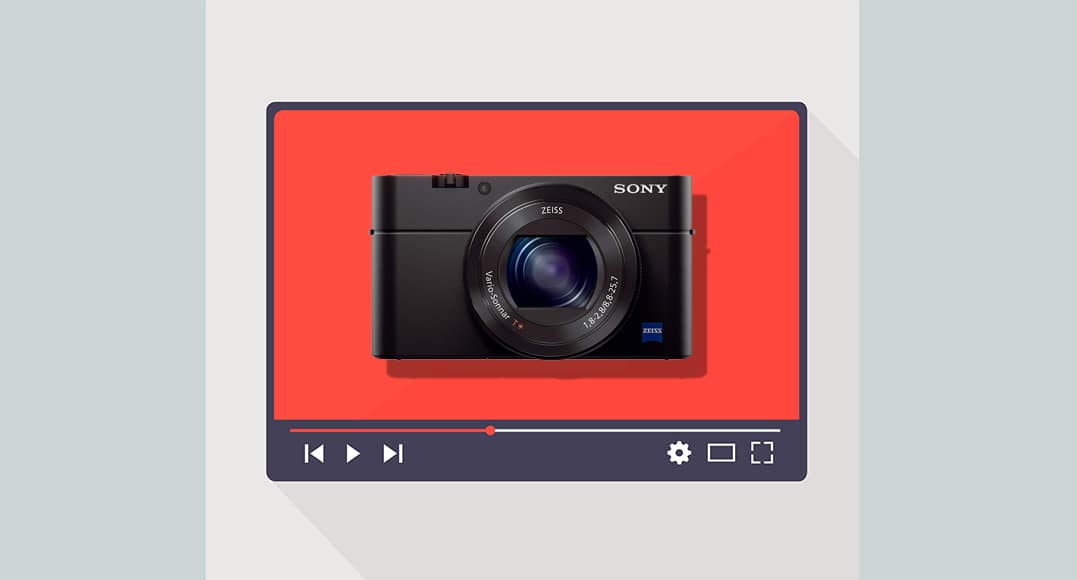
3. Sony a6400 BEST MID-SIZE CAMERA FOR YOUTUBE
- Unlimited recording time
- Front facing screen
- Real-time subject tracking
- 425-point autofocus
- Good battery life
- USB charging
- External mics will totally block the screen
- Few external changes from the a6300
- EVF isn’t as good as it should be
- No in-camera stabilization
Size: 4.72 x 2.64 x 2.36″ (120 x 67 x 60 mm)
Weight: 14.22 oz (403 g) with batteries
Sensor: 24.2 MP Exmor APS-C CMOS
Who uses it? Jason Vong
If you’re serious about producing high quality content for your YouTube channel, then you’re going to need, among others, a good camera to shoot your videos with. After all, well-written content isn’t the only thing that gets you noticed, right?
Enter the Sony a6400 (see review). This mid-sized marvel is one of the best you can get for the money and should be a more-than-adequate tool for shooting the high-quality videos and images that your viewers deserve.
Coming from one of the most credible camera manufacturers in world, the Sony a6400 is certainly something that’s worth giving some thought as it comes with a plethora of features. Among these are: real-time subject tracking, real-time eye AF (which locks on to a subject’s eyes), 425 autofocus points and a blisteringly fast autofocus acquisition time of .02 seconds.
(See our full review of the Sony a6400 for more info on eye AF.)
The a6400 features an APS-C sensor which is larger than what compacts come with. It is also able to shoot in everything from 1080p all the way up to ultra-high resolution 4K videos at 30fps. This means that you can capture high quality video that should keep your viewers’ eyes glued to your content.
Unlike previous models, the Sony a6400 does away with the 30-minute video limit so you can now capture video for as long as you like or at least, for as long as your memory card will allow you to, without worrying about your camera overheating.
While the Sony a6400 comes with a lot of bells and whistles, one element that makes it perfect for YouTubing is its display. Featuring a 921K dot touch screen that flips up and can articulate to 90 degrees, you effectively have a monitor attached to your camera so filming on the go is made much easier.
Take note though, that while the Sony a6400 can take an external microphone, attaching one to the hot shoe will block the flip-up display and render it next to useless. Fortunately, there’s a very effective workaround in the form of a cold shoe bracket that you can check out here.
Another thing to consider is that the touch screen display is not as sensitive as it should be and is only good for focusing your subjects. As such, don’t expect to be able to navigate menus with it or do fancy rack focus effects like you can with other camera brands.
Unlike compact cameras, the a6400 doesn’t have a lens built-in. Instead, it makes use of Sony’s E-mount lens system so there are a number of great lenses that you can buy for it depending on what you want to do with the camera – see our recent article on the best lenses for the Sony a6400.
The Sony a6400 can come with either a 16-35mm or an 18-135mm kit lens. While these can get the job done, it’s important to note that there are better options available specifically, lenses with the Optical Steady Shot (OSS) system built in.
You see, as capable as the Sony a6400 is, it doesn’t come with in-camera stabilization so your viewers will benefit greatly from OSS, especially if you hand hold your shots a lot. The other option, of course, is to invest in a gimbal… but not everyone has the desire to use one of these every time you want to film something.
As far as the best lenses to get, it depends on what type of YouTubing you do. Wider lenses for instance, such as the 10-18 f4 OSS are great for general filming as they let you take everything in. A good travel lens, on the other hand, would be the Zeiss 16-70 f4 OSS as it is wide enough to capture scenes with yet still affords you some reach should you need to zoom in – see other great a6400 lenses here.
Understand, however, that jumping off the deep end with these lenses (they do cost quite a bit) isn’t a requirement because the kit lenses the Sony a6400 comes with can get the job done quite well. Besides, you can always purchase these upgrades as the need for them comes up.
The Sony a6400 is a fantastic YouTube camera because it is weather-sealed and ruggedly built. As such, you can take it just about anywhere you go. Of course, before you set out make sure you have a few large and fast UHS-I SD memory cards with you along with a couple of batteries as the Sony a6400 can go through them quite fast.
At just under a thousand bucks with a 16-35 kit lens, the Sony a6400 is a very good deal. It’s capable of holding its own even against pricier alternatives so you need not think too long or too hard about getting one for yourself.
Why You Should Buy

4. Canon 80D BEST DSLR CAMERA FOR YOUTUBE
- Excellent autofocus
- Articulating screen/li>
- Good dynamic range
- Very responsive touch screen
- Excellent low light performance
- Good battery life
- Cannot shoot 4K video
- No clean HDMI output
- Pricey lenses and accessories
- Bulky
Size: 5.47 x 4.13 x 3.11″ (139 x 105 x 79 mm)
Weight: 1.61 lb (730 g)
Sensor: 24MP APS-C
Who uses it? JC Caylen, Aspyn Ovard
You may be wondering why, with all the smaller, lighter alternatives out there, you would want to use a big, bulky DSLR? Well, the answer is simple. Video quality.
Being bigger than compacts, DSLRs come with significantly larger image sensors. This means that these cameras can produce better quality images and videos than compacts that typically have smaller sensors.
Of course, you may argue that your compact has a 20 megapixel sensor so it should be the equivalent of a 20 megapixel DSLR, right? Well, no. You see, such a compact’s smaller sensor (typically .5 x .3″) would need to have 20 million pixels on it so the result is smaller pixels or dots.
This unfortunately means that the sensor can gather far less information than a DSLR’s larger full-frame or even APS-C sized sensor even if the megapixel count is the same.
Simply put, sensor size counts for a lot, so if this is something that’s important to you, a DSLR, particularly the Canon 80D, is something worth putting on your list.
Geared as much toward taking videos as it is towards taking stills, the Canon 80D is the camera of choice of many popular YouTubers for quite a few reasons.
To begin with, the 80D comes with Canon’s coveted dual AF system which means that it can continuously autofocus while shooting.
The result is your subject is kept sharp and in focus at all times, even when moving. This is very important especially if you shoot your content solo as there will be significantly fewer re-shoots that stem from bad focus.
Being targeted towards video enthusiasts, the Canon 80D is equipped with an articulating touch screen. This conveniently allows you to adjust focus in live view mode and navigate menus.
It also makes it easier for you to film as you can position the screen to suit the shooting situation. This means that you can use it as a monitor while filming as well as take awkward hand-held shots with relative ease.
Featuring a large APS-C sensor that is smaller only than the full-frame sensors used in upper tier DSLRs, the Canon 80D is capable in all environments and delivers wonderful low light performance. What this means is, you can shoot in even less-than-optimal conditions and expect decent output.
Other features worth mentioning are the 45 AF points which is a huge step up from the Canon 70D’s 19 AF points and three AF modes: face+tracking, flexizone-multi and flexizone-single that give you the flexibility you need to shoot the way you want to.
Like all other DSLRs, the Canon 80D will require an investment in a lens (or lenses). Yes, you can opt for kit lenses like the 18-135mm and the 18-55mm, but if video or image quality is a priority, you’re going to want something better.
This usually translates to shelling out a sizeable amount for a set of wide, normal and telephoto lenses especially if you’re going to go for pro-quality canon L glass.
Ideally, the Canon 24-70 f2.8L II is a good lens to start with as it covers most of your needs while giving you top-shelf performance. It is, however, priced higher than the camera so you may want to think long and hard before you pull the trigger on it.
Other potential candidates would be the Canon 18-135mm f/3.5-5.6 IS USM which incidentally, can come as a kit lens with the Canon 80D, the Canon EF 50mm 1.8 or the wide-angle Canon 10-18mm f/4-5.6 IS STM.
You can see more recommendations in our guide to the best Canon 80d lenses.
Other accessories worth looking into would be an external microphone and a power zoom adaptor both of which are available as part of the video creator bundle as well as extra batteries and a few high capacity class 10 SDXC cards.
As capable as the Canon 80D is, it does have one glaring shortcoming – it can’t shoot in 4K. Given the growing popularity of the standard, this makes some potential users shy away from this particular camera.
As such, if you intend to shoot in ultra-high definition, then this isn’t the camera for you. However, if you’re planning to produce content for YouTube, you should know that the site doesn’t support 4K anyway so the functionality probably isn’t something you’re going to need.
All told, the Canon 80D is a very capable video and stills camera that when used properly, can deliver fantastic results. It remains to be a great choice for potential YouTubers and you can expect it to be a more-than-adequate filming tool that you can use for many years to come. Arguably the best camera for YouTube videos in the DSLR category.

How to Choose a Camera for YouTube
Big name YouTube stars can certainly afford to invest in expensive, studio-grade equipment. Therefore, it isn’t surprising that the videos they produce are crisp, clear, and easy on the eyes.
But what about those who are just getting started? Would they need to shell out a large amount just to get comparable video quality when choosing a camera for filming? Well, the answer is a big, resounding no :-)
These days, even budget cameras from reputable manufacturers are capable of quite a bit, so if you go for models that are cheaper, you can expect more advanced models to perform even better. Finding a good camera for YouTube won’t necessarily break the bank.
So, what should you look for in a good YouTube camera? If you’re just starting out, you’d want to hedge your bets by not going for massively expensive cameras. On the other hand, you’re not going to want something that’s really cheap either, so focus your search on value instead.
Go for something that’s feature-rich but will not cost you over a grand (there are quite a few options).
Also, because tech is always advancing, you’d want a bit of future-proofing by choosing something that can shoot stills, has built-in video effects and can shoot in high definition.
Lastly, you’d want a camera that a camera that is small enough to take anywhere yet is rugged enough for use in rougher environments.
What Camera do Famous YouTubers Use?

While the content they produce differs widely, one thing the biggest YouTube celebrities have in common is that the technical quality of their output is excellent.
However, when it comes to the cameras they use to produce their videos, there’s apparently quite a spread.
Here’s a look at some of the cameras that famous YouTube stars use:
Casey Neistat:
- Canon EOS Mark II
- Panasonic GH5K
- Sony CyberShot RX100 V
- Sony a6500
- Sony a7S II
- Canon EOS 70D
- Canon EOS-1DX Mark II
Dan TDM
- Sony a7
- Logitech HD Pro Webcam C920 (See: best webcam for video conferencing)
- Canon EOS 600D
- Canon PowerShot S120
PewDiePie:
- Canon XA11
- Logitech HD Pro Webcam C920
- Canon G7X Mark II
Markiplier
- Sony a7RII
- Canon EOS 70D
- Sony FDR-AX53
- Logitech C920
Logan Paul
- Canon G7X Mark II
Zoella
- Canon EOS 70D
Jake Paul
- Sony Alpha A7s
David Dobrik
-
Sony DSCHX80/B
Tanner Fox
- Canon EOS 70D
- Canon T3i
Mylifeaseva
- Canon EOS 70D
Nigahiga
- Panasonic GH5
Joey Graceffa
- Sony RX100
JC Caylen
- Canon EOS 80D
Kian Lawley
- Canon EOS 5D Mark III
Marques Brownlee
- Red Weapon Monstro Forged CF 8K
- Sony a7R III
Roman Atwood
- Canon EOS 5D Mark IV
- Sony CyberShot RX100 IV
- Canon PowerShot G7 X
Bratayley
- Canon G7 X Mark II
- Sony RX100 IV
FaZe Rug
- Canon PowerShot G7 X Mark II
FunForLouis
- Sony CyberShot RX100 IV
- Canon PowerShot G7 X
Missglamorazzi
-
Sony a7
Aspyn Ovard
- Canon EOS 80D
As you can see, there’s no right or wrong camera for Youtube. You can even use your smartphone if the content is top-notch!
That being said, below are the 4 cameras for YouTube that I recommend looking closest at.
I’ve separated them by their physical dimensions, since this is usually an important factor for most keen video shooters, particularly if you intend to travel with your camera gear a lot.
I’ve also tried to keep them all within what I consider to be a reasonable budget – obviously this will be different for everyone, but hopefully one of the cameras below will suit your pocket.
- What camera do YouTubers use for gaming?
Stream webcams, like the Logitech C922 Pro and the Razer Kiyo Pro, are popular among gamers. However, it’s also possible to use a non-webcam camera with a flip screen for more professional quality.
Final Words
So how does this all of this help you? As a YouTuber or as someone who’s planning to become one, it’s a given that you want to produce content for your channel that’s fresh and clean. So, it’s important for you to know what you want and have at least a general understanding of how things work, including a firm grasp on post-production and using the right video editing apps.
Taking the time to research, read and learn about what’s available may take some a while, but doing so will allow you to make better, more informed choices when it comes to the gear that you will eventually end up owning.
Besides, good cameras don’t exactly go for peanuts so you may as well find something that you will be proud to own or at least be able to live with until you decide to upgrade.
Lastly, and perhaps most importantly, you will want to make sure that you come up with material that people will actually want to watch.
The truth is, you can shoot with the latest and greatest equipment around but, if the content is senseless, pointless or is poorly thought out, then you can expect the people you want to attract to give your channel a very wide berth.

Incredible feature set in a robust, weatherproof body. Great image quality. Highly recommended.
Don Machuca is a writer and professional photographer/videographer from Manila, Philippines who specializes in landscapes, events and product photography.





